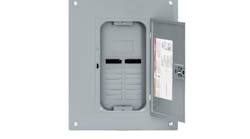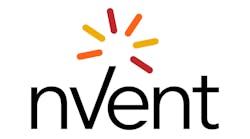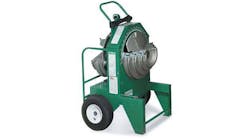Until recently, I accepted the general theory that it's a good idea to take cash discounts, when possible, when paying suppliers. Most distributors take cash discounts in times of strong revenues and solid cash flow; but when the business starts slowing down, they tend to opt for extended dating.
What recently hit me like a two-by-four across the backside of the noggin is this: If we don't take advantage of the cash discounts presented by our suppliers, we are essentially borrowing money at the highest interest rates most of us will ever experience. Don't you just love running across information that supports a practice you have always just assumed to be true?
If you ever want to get your point across, prove it mathematically. Numbers don't lie. (Some folks apply numbers in a way that is far from the truth; but that isn't the numbers' fault.)
Let's look at a common set of terms for a supplier. The supplier will offer a 2 percent discount off a particular invoice if paid within the first 10 days of the due date. The due date of the invoice is actually 30 days. The terms are usually printed somewhere on the invoice in this fashion: 2 percent 10th, net 30. The supplier is giving a reward of 2 percent off the total invoice value for paying 20 days early.
If you choose not to take the discount and pay within the 30 days, you are actually paying 2 percent more for the product than you have to. Stated another way, you're paying a 2 percent interest charge for the privilege of holding your money an additional 20 days. Roll that interest charge out on an annual basis, and you're talking about an interest rate around 37 percent.
Holy loan shark, Batman. That's real money. I don't know about you; but I think that I can find a better interest rate out there — especially in our current economy.
Let's take a look at one more set of terms. Many suppliers like to be paid in 25 days, not 30. Some folks will offer 1 percent for paying in 10 days on an invoice due in 25 days. The terms will be stated: 1 percent 10th, net 25. Again, this is a common set of terms in wholesale distribution. Let's analyze this scenario.
If you choose to hold onto your cash and pay in 25 days, you have essentially borrowed money for 15 days at an interest rate of 1 percent. If you push this out to an annual percentage rate, you just signed up for a 25 percent interest rate loan. Ouch.
Looking at the table above is enough to make me grab the extra-strength Maalox. I can't tell you how many times I chose to forego the cash discount just to hang onto my cash for a few extra days. When I realized the penalty here, I was blown away. Could you imagine admitting to the owner of your business that you just signed up for a 50-percent-interest-rate loan? If you are the business owner, could you admit it to your spouse? A 50-percent-interest-rate loan is what you just did if you avoided the cash discount option of 2 percent 10th, net 25.
I'm sure we can all agree the interest rates in the table are substantial and should be avoided if possible. I understand that cash can get very tight at times. Sometimes it just isn't possible to pay in 10 days, but this is where a solid line of credit comes into play. Using a lower-interest business line of credit in order to take advantage of early payment discounts is a sound business practice.
In addition to the afore-mentioned examples of possible terms from supplier partners, special extended dating terms are also common in wholesale distribution. Many of us have negotiated net-60 and net-90 terms. Although it may sound great to hold onto your money for an additional couple of months, you need to be able to prove your position beyond the old gut-feeling analysis.
Remember, if you ever want to justify your actions, prove it mathematically. Fortunately, we have a secret formula. If you want to determine what the annual interest rate would be if you choose to skip the cash discount, use this calculation:
discount percent ÷ (1 - discount percent) × (365 ÷ number of borrowing days)
Let's go through an example. The supplier gives a 2 percent discount for payment in 10 days. The invoice is due in 30 days. Let's say that you are a pretty savvy negotiator and have convinced the supplier to extend the due date out to 90 days. The question is, “Should I pay in 10 and grab the 2 percent, or should I hold my cash for an additional 80 days?” Run the math.
2 percent ÷ (1 - 2 percent) × (365 ÷ 80)
.02 ÷ (1 - .02) × (365 ÷ 80)
.02 ÷ (.98) × (4.56)
.0204 × 4.56 = .0931 or 9.31 percent
Should you take the discount and borrow on your line of credit? It really depends on the interest rate for your line of credit and your borrowing capacity. In some cases, 9.31 percent might not be such a bad rate.
The most important thing here is that you can justify your actions. Being able to prove your business decisions mathematically goes a long way toward improving the bottom line.
Before closing, I want to throw one more log on the fire. Many wholesale distributors offer cash discounts to customers, and the same formula can be applied to determine the interest rate on the loan you just picked up from your customer.
By offering 2 percent 10th net 25 terms, electrical distributors borrow money from any customer who chooses to take the cash discount at the same outrageous rate shown in the table above.
Some industries require cash discounts as a matter of tradition. Giving cash terms should be avoided if at all possible because once you start, it can be really difficult to get rid of them.
Early in my distribution career, I remember hearing some very sound advice on cash discounts from Don Rice, former head of the School of Industrial Distribution at Texas A&M: “Always take 'em, never give 'em.”
Jason Bader is a partner with The Distribution Team Inc., a consulting firm that works with wholesale distributors to improve their net profit through efficient inventory management. Visit the firm's Web site at www.thedistributionteam.com. Bader can be reached at (503) 282-2333 or via e-mail at [email protected].








